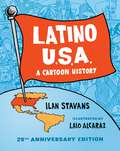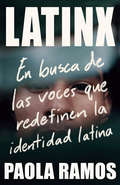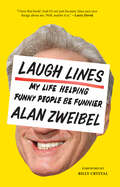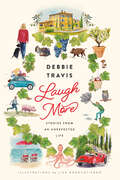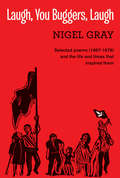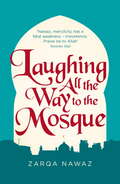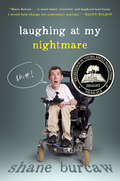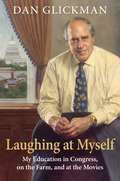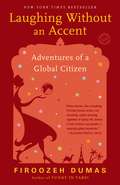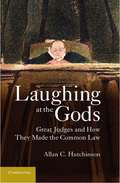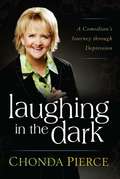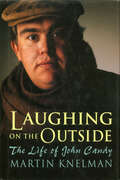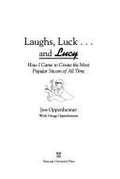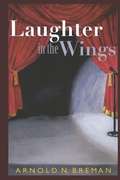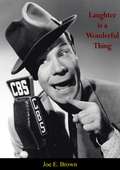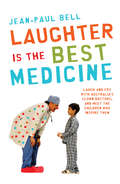- Table View
- List View
Latinitas: Celebrating 40 Big Dreamers
by Juliet MenéndezDream big with the Latinitas in Latinitas: Celebrating 40 Big Dreamers.Discover how 40 influential Latinas became the women we celebrate today! In this collection of short biographies from all over Latin America and across the United States, Juliet Menéndez explores the first small steps that set the Latinitas off on their journeys. With gorgeous, hand-painted illustrations, Menéndez shines a spotlight on the power of childhood dreams.From Supreme Court Justice Sonia Sotomayor to singer Selena Quintanilla to NASA’s first virtual reality engineer, Evelyn Miralles, this is a book for aspiring artists, scientists, activists, and more. These women followed their dreams—and just might encourage you to follow yours!The book features Sor Juana Inés de la Cruz, Juana Azurduy de Padilla, Policarpa Salavarrieta, Rosa Peña de González, Teresa Carreño, Zelia Nuttall, Antonia Navarro, Matilde Hidalgo, Gabriela Mistral, Juana de Ibarbourou, Pura Belpré, Gumercinda Páez, Frida Kahlo, Julia de Burgos, Chavela Vargas, Alicia Alonso, Victoria Santa Cruz, Claribel Alegría, Celia Cruz, Dolores Huerta, Rita Moreno, Maria Auxiliadora da Silva, Mercedes Sosa, Isabel Allende, Susana Torre, Julia Alvarez, Sandra Cisneros, Sonia Sotomayor, Rigoberta Menchú Tum, Mercedes Doretti, Sonia Pierre, Justa Canaviri, Evelyn Miralles, Selena Quintanilla, Berta Cáceres, Serena Auñón, Wanda Díaz-Merced, Marta Vieira da Silva, Alexandria Ocasio-Cortez, and Laurie Hernandez.Godwin Books
Latino Athletes
by Ian C. FriedmanA book about 175 Latinos who have made significant accomplishments in athletics in the U.S. and the world.
Latino Representation in State Houses and Congress
by Jason P. CasellasThis book argues that Latino representation in U. S. legislative institutions is shaped not only by demographics but by legislative institutional design, as well as elite-driven methods, features of the electoral system, and the increasing mainstreaming of Latinos in American society. The election of Latino legislators in the United States is thus complex and varied. This book provides evidence on how successful Latinos have been in winning state legislative and congressional districts in which they have no natural advantage. In particular, this book demonstrates that Latino candidates benefit from higher percentages of Latino citizens in the state, more liberal citizenries, and citizen legislatures. Jason Casellas argues that the legislatures most conducive to the election of Latino candidates are Florida, New Mexico, and California, whereas the least conducive are the U. S. House and New York.
Latino USA: A Cartoon History
by Ilan StavansLatino USA represents the culmination of Ilan Stavans's lifelong determination to meet the challenges of capturing the joys, nuances, and multiple dimensions of Latino culture within the context of the English language. In this cartoon history of Latinos, Stavans seeks to combine the solemnity of so-called "serious literature" and history with the inherently theatrical and humorous nature of the comics. The range of topics includes Columbus, Manifest Destiny, the Alamo, William Carlos Williams, Desi Arnaz, West Side Story, Castro, Guevera, the Bay of Pigs, the Cuban Missile Crisis, Neruda, GarcÃMáuez, the Mariel Boatlift, and Selena. Stavans represents Hispanic civilization as a fiesta of types, archetypes, and stereotypes. These "clichéigurines" include a toucan (displayed regularly in books by GarcÃMáuez, Allende, and others), the beloved Latino comedian Cantinflas (known as "the Hispanic Charlie Chaplin"), a masked wrestler, and Captain America. These multiple, at times contradictory voices, each narrating various episodes of Latino history from a unique perspective, combine to create a carnivalesque rhythm, democratic and impartial. For, as Stavans states, "History, of course, is a kaleidoscope where nothing is absolute." Latino USA, like the history it so entertainingly relates, is a dazzling kaleidoscope of irreverence, wit, subversion, anarchy, politics, humanism, celebration, and serious and responsible history.
Latino Visions: Contemporary Chicano, Puerto Rican, and Cuban American Artists
by James D. CockcroftThe vibrancy and passion of contemporary Latino artists in the United States are celebrated in this book from award-winning writer James D. Cockcroft. Discover the context--political and social--in which their work has been created. Describes the evolution of Latino art in America through discussion of various artistic movements and important Latino artists.
Latinos: A Biography of the People
by Earl ShorrisEarl Shorris's deeply moving narrative enlivened by biographical sketches of Mexican Americans, Cuban Americans, Puerto Ricans, and many others struggling with the burden of a rich and terrible history illuminates every aspect of the Latino experience in America, from language to education to social and political organization.
Latinx: En busca de las voces que redefinen la identidad latina
by Paola RamosEl primer paso hacia el cambio es reconocer que nuestro poder nace de nuestra identidad. Los jóvenes latinos en los Estados Unidos están redefiniendo su identidad, rompiendo moldes establecidos, y despertando políticamente de maneras sorprendentes y poderosas. Muchos de ellos—afrolatinos, indígenas, musulmanes, queer e indocumentados tanto en zonas urbanas como rurales—representan voces históricamente ignoradas en el modo en que la diversa población de casi seis millones de latinos en los Estados Unidos ha sido representada. Hasta ahora. En esta inspiradora crónica de viaje de costa a costa, la periodista y activista Paola Ramos emprende una búsqueda de los individuos y comunidades que dan vida a un nuevo movimiento que esta definiendo el término controversial &“Latinx&”. Ramos nos presenta a un grupo de indígenas originarios de Oaxaca que ha reinventado la calle mayor de un pueblo industrial en el estado de Nueva York, a las &“Las Poderosas&”, que luchan por los derechos reproductivos en Texas, a unos músicos en Milwaukee que con sus ritmos confortan a otros sobre sus raíces... A lo largo de este viaje encontraremos también a activistas ambientales, trabajadores de campo, drag queens, e inmigrantes detenidos en la frontera. A partir de su trabajo periodístico sobre el terreno, así como de su historia personal, Ramos ilustra como el término &“Latinx&” ha dado paso a un sentimiento de pertenencia y solidaridad sin precedentes entre los latinos de este país. Relevante e inspirador, Latinx nos invita a expandir nuestra conciencia de lo que significa ser latino y ser estadounidense, y como ambas identidades conviven dentro y fuera de esta comunidad.
Laugh Lines: My Life Helping Funny People Be Funnier
by Alan ZweibelWith his tender, funny memoir of four decades in the business, one of the first writers for Saturday Night Live traces the history of American comedy. Alan Zweibel started his comedy career selling jokes for seven dollars apiece to the last of the Borscht Belt standups. Then one night, despite bombing on stage, he caught the attention of Lorne Michaels and became one of the first writers at Saturday Night Live, where he penned classic material for Gilda Radner, John Belushi, and all of the original Not Ready For Prime Time Players. From SNL, he went on to have a hand in a series of landmark shows—from It’s Garry Shandling’s Show to Curb Your Enthusiasm. Throughout the pages of Laugh Lines Zweibel weaves together his own stories and interviews with his friends and contemporaries, including Richard Lewis, Eric Idle, Bob Saget, Mike Birbiglia, Sarah Silverman, Judd Apatow, Dave Barry, Carl Reiner, and more. The book also features a charming foreword from his friend of forty-five years Billy Crystal, with whom he co-wrote and co-produced the upcoming film Here Today that stars Crystal and Tiffany Haddish. Laugh Lines is a warmhearted cultural memoir of American comedy.“In Laugh Lines, Zweibel looks back, affectionately and informatively, at a career that began when he was a young deli worker grinding out jokes for old-school borscht belt comedians in his spare time, and that, after his “S.N.L.” years, included rewarding collaborations with, among others, Garry Shandling, Billy Crystal, Martin Short, Larry David and Dave Barry. . . . Fascinating.” —New York Times“Any comedy fan will thrill to see the contemporary art's invention through the eyes of consummate funny man Alan Zweibel. He takes you behind the velvet rope and makes you weep for all those artists who made us laugh. Screamingly funny—also very moving. A classic.” —Mary Karr“Alan Zweibel is legendary among us comedians. He is the man who delivers comedy with an emotional clout that makes him respected and revered.” —Steve Martin
Laugh More: Stories from an Unexpected Life
by Debbie TravisLifestyle pioneer and bestselling author Debbie Travis is back with a book of ridiculously funny, touching and true stories drawn from her own life and dedicated to everyone in desperate need of a good laugh.A decade ago, Debbie Travis gave up her hectic life as the producer and star of several hit TV shows to move to a 13th-century crumbling farmhouse and vast olive orchard in Tuscany, which she and her husband then turned into the boutique hotel and wellness retreat. That was a big change in direction—and Debbie&’s shared the best of what she learned on that journey in two bestselling books full of humane, heartfelt and sensible advice on pursuing your true passion (Design Your Next Chapter) and making room for happiness, health and connection (Joy: Life Lessons from a Tuscan Villa).Now, in Laugh More, Debbie digs down to what really keeps her going, especially when the going gets tough: her talent for telling a good story and sharing a good laugh. Organizing them around the passing of the seasons at the Villa Reniella, Debbie gathers up a brilliant mix of stories from her daily life and from her past—growing up headstrong in a struggling family in northern England (her mum perfected dog-food shepherd&’s pie), travelling the world as a model (not so glamorous), becoming one of the first home renovation TV stars (by the seat of her overalls) and encountering the famous and the delightful (especially her wicked and wonderful grandmother, Joyce). Snortingly funny, poignant, inspirational and full of the human foibles Debbie loves so much, Laugh More is a warm and cozy book to curl up with, and even better to read aloud. And since memories are so often ignited by great eating, Debbie has added a bonus: fifteen of her favourite, seasonal recipes.
Laugh, You Buggers, Laugh: Selected poems (1967-1979) and the life and times that inspired them
by Nigel GrayLaugh, You Buggers, Laugh is no ordinary collection of poems. Nigel Gray led an extraordinary life in extraordinary times. He was a political activist and performance poet in the UK during the days of rage and hope, flower power and free love, radical social change and political upheaval that typified the 1960s and 70s. He travelled on political forays to Southeast Asia, Africa, Ireland, and mainland Europe. This is a selection of poems from that time set in a context that explains the situations and experiences that inspired them. Nigel Gray, an Irish-born West Australian, is the multi-award-winning author of a hundred published books for adults and children.
Laughing All the Way to the Mosque: The Misadventures of a Muslim Woman
by Zarqa NawazBeing a practicing Muslim in the West is sometimes challenging, sometimes rewarding and sometimes downright absurd. How do you explain why Eid never falls on the same date each year; why it is that Halal butchers also sell teapots and alarm clocks; how do you make clear to the plumber that it's essential the toilet is installed within sitting-arm's reach of the tap? Zarqa Nawaz has seen and done it all. And it's not always easy to get things right with the community either: Zarqa tells of being asked to leave the DBW (Dead Body Washing) committee after making unsuitable remarks; of undertaking the momentous trip to Mecca with her husband, without the children, thinking (most incorrectly) that it will also be a nice time to have uninterrupted sex; of doing the unthinkable, and creating Little Mosque on the Prairie, a successful TV sitcom about that very (horrified, then proud) community. You have to laugh.
Laughing All the Way to the Mosque: The Misadventures of a Muslim Woman
by Zarqa NawazBeing a practicing Muslim in the West is sometimes challenging, sometimes rewarding and sometimes downright absurd. How do you explain why Eid never falls on the same date each year; why it is that Halal butchers also sell teapots and alarm clocks; how do you make clear to the plumber that it's essential the toilet is installed within sitting-arm's reach of the tap? Zarqa Nawaz has seen and done it all. And it's not always easy to get things right with the community either: Zarqa tells of being asked to leave the DBW (Dead Body Washing) committee after making unsuitable remarks; of undertaking the momentous trip to Mecca with her husband, without the children, thinking (most incorrectly) that it will also be a nice time to have uninterrupted sex; of doing the unthinkable, and creating Little Mosque on the Prairie, a successful TV sitcom about that very (horrified, then proud) community. You have to laugh.
Laughing At My Nightmare
by Shane BurcawWith acerbic wit and a hilarious voice, Shane Burcaw's Laughing at My Nightmare describes the challenges he faces as a twenty-one-year-old with spinal muscular atrophy. From awkward handshakes to having a girlfriend and everything in between, Shane handles his situation with humor and a "you-only-live-once" perspective on life. While he does talk about everyday issues that are relatable to teens, he also offers an eye-opening perspective on what it is like to have a life threatening disease.
Laughing At Myself: My Education in Congress, on the Farm, and at the Movies
by Dan GlickmanIn this book, the author tells his story of a classical family background, religious heritage, and 'Midwestern-nice' roots, and how it led to a long and successful career in public service. He combines a steady sense of humor with serious reflection on his rise from the middle of nowhere to becoming a successful US politician and the first Jewish secretary of agriculture since Joseph served pharaoh in biblical times. The author defines success as a willingness to listen, an ability to communicate ideas, and a yen for compromise. He has successfully navigated the worlds of congressional politics, cabinet-level administration, and the entertainment industry and offers readers the many tricks of the trade he has learned over the years, which will inform the understanding of citizens and help aspiring politicians seeking alternatives to the current crisis of partisanship. He is convinced that the toxicity seen in our current political culture and public discourse can be mitigated by the principles that have guided his life-a strong sense of humor (specifically an ability to laugh at himself), respect and civility for those who have different points of view, a belief system founded on values based on the Golden Rule, and a steadfast commitment to solve problems rather than create irreconcilable conflicts. While these values form the backbone of his personal life and professional career, the real key to his success has been resiliency-learning from adversity and creating opportunities where none may have originally existed. Even though you never know what's around the corner, in this book, the author offers a bold affirmation that America is still a nation built on opportunity and optimism. The book affirms readers in their desire to move beyond just surviving to living life with purpose, passion, and optimism.
Laughing Without an Accent
by Firoozeh DumasNATIONAL BESTSELLER"There's such warmth to Dumas' writing that it invites the reader to pull up a seat at her table and smile right along with her at the quirks of her family and Iranians and Americans in general."--BooklistIn the New York Times bestselling memoir Funny in Farsi, Firoozeh Dumas recounted her adventures growing up Iranian American in Southern California. Now she again mines her rich Persian heritage in Laughing Without an Accent, sharing stories both tender and humorous on being a citizen of the world, on her well-meaning family, and on amusing cultural conundrums, all told with insights into the universality of the human condition. (Hint: It may have to do with brushing and flossing daily.) With dry wit and a bold spirit, Dumas puts her own unique mark on the themes of family, community, and tradition. She braves the uncommon palate of her French-born husband and learns the nuances of having her book translated for Persian audiences (the censors edit out all references to ham). And along the way, she reconciles her beloved Iranian customs with her Western ideals. Explaining crossover cultural food fare, Dumas says, "The weirdest American culinary marriage is yams with melted marshmallows. I don't know who thought of this Thanksgiving tradition, but I'm guessing a hyperactive, toothless three-year-old." On Iranian wedding anniversaries: "It just initially seemed odd to celebrate the day that 'our families decided we should marry even though I had never met you, and frankly, it's not working out so well.'" On trying to fit in with her American peers: "At the time, my father drove a Buick LeSabre, a fancy French word meaning 'OPEC thanks you.'" Dumas also documents her first year as a new mother, the familial chaos that ensues after she removes the television set from the house, the experience of taking fifty-one family members on a birthday cruise to Alaska, and a road trip to Iowa with an American once held hostage in Iran. Droll, moving, and relevant, Laughing Without an Accent shows how our differences can unite us--and provides indelible proof that Firoozeh Dumas is a humorist of the highest order.Praise for Laughing Without an Accent "Dumas is one of those rare people: a naturally gifted storyteller."--Alexander McCall Smith "Laughing Without an Accent is written . . . as if Dumas were sharing a cup of coffee with her reader as she relates her comic tales. . . . Firoozeh Dumas exudes undeniable charm [as she] reveals a zeal for culture--both new and old--and the enduring bonds of a family filled with outsize personalities."--San Francisco Chronicle "[Dumas is] like a blend of Anne Lamott and Erma Bombeck."--Bust "Humorous without being sentimental, [Dumas] speaks to the American experience."--The Plain DealerFrom the Hardcover edition.
Laughing at the Gods
by Allan C. HutchinsonAny effort to understand how law works has to take seriously its main players – judges. Like any performance, judging should be evaluated by reference to those who are its best exponents. Not surprisingly, the debate about what makes a 'great judge' is as heated and inconclusive as the debate about the purpose and nature of law itself. History shows that those who are candidates for a judicial hall of fame are game changers who oblige us to rethink what it is to be a good judge. So the best of judges must tread a thin line between modesty and hubris; they must be neither mere umpires nor demigods. The eight judges showcased in this book demonstrate that, if the test of good judging is not about getting it right, but doing it well, then the measure of great judging is about setting new standards for what counts as judging well.
Laughing in the Dark: A Comedian's Journey through Depression
by Chonda PierceA refreshingly honest and witty exploration of one woman&’s journey through depression. For many, depression is associated with shame and humiliation—even a lack of faith. But Laughing in the Dark is like getting genuine advice from a kind friend. And in her words you&’ll find hope and renewed confidence that will guide you through your own darkness and into the light. - If you are currently suffering from depression—this book will help you realize you&’re not alone. - If you have a loved one dealing with depression—this book will help you understand. - If you are a mental health professional—you now have a new tool to encourage your clients. Along with the humor, Chonda Pierce shares practical insight, biblical teaching, emotional support, and sympathetic concern. Whether you&’ve experienced depression in your own life or in the life of someone you love, this friend has something to offer you: help, hope and, believe it or not, plenty of laughter.
Laughing on the Outside: The Life of John Candy
by Martin Knelman“A truthful look at John Candy—affectionate but unblinking.” —San Francisco ExaminerFunny and gentle, John Candy was loved by millions of movie fans for playing true-to-life characters. Whether as the irrepressible bon vivant in Splash, the misunderstood slob in Uncle Buck, or the generous lonely salesman in Planes, Trains, and Automobiles, John Candy struck a perfect balance between self-deprecating humor and irresistible, emotional warmth. In this compassionate portrait of John Candy, award-winning journalist Martin Knelman reveals that behind the scenes, beneath the booming laughter, a man blessed by genius and goodness of heart was ultimately and sadly undermined by self-doubt and misguided ambition.“Laughing on the Outside celebrates the genius of John Candy.” —Vanity Fair“Candy’s is ultimately a sad story, one that Knelman has made sympathetic and memorable, too.” —Booklist“This book is a must for Candy’s fans and an ought-to for everyone else.” —Toronto Globe and Mail“Everyone knew the happy-go-lucky comic, but Knelman shows us the sad clown underneath, which ultimately enriches the image.” —Toronto Star
Laughing with the Trickster: On Sex, Death, and Accordions (The CBC Massey Lectures)
by Tomson HighwayBrilliant, jubilant insights into the glory and anguish of life from one of the world’s most treasured Indigenous creators. Trickster is zany, ridiculous. The ultimate, over-the-top, madcap fool. Here to remind us that the reason for existence is to have a blast and to laugh ourselves silly. Celebrated author and playwright Tomson Highway brings his signature irreverence to an exploration of five themes central to the human condition: language, creation, sex and gender, humour, and death. A comparative analysis of Christian, classical, and Cree mythologies reveals their contributions to Western thought, life, and culture—and how North American Indigenous mythologies provide unique, timeless solutions to our modern problems. Highway also offers generous personal anecdotes, including accounts of his beloved accordion-playing, caribou-hunting father, and plentiful Trickster stories as curatives for the all-out unhappiness caused by today’s patriarchal, colonial systems. Laugh with the legendary Tomson Highway as he illuminates a healing, hilarious way forward.
Laughs, Luck...and Lucy: How I Came to Create the Most Popular Sitcom of All Time
by Jess Oppenheimer Gregg OppenheimerLaughs indeed as Jess Oppenheimer charts his rise from radio station gofer to inventor of the sitcom, as he winds up writing--then producing--Lucille Ball's show, first on radio, then on television. Luck, too, as the author recounts the good fortune that has him, within minutes of arrival in Hollywood, sitting down at a lunch counter and getting a tip that secures a job within days and a career for life. Ironic, too, that this inveterate TV writer had to be cajoled for years to set down these Hollywood heyday memoirs. He never finished, and it was left to son Gregg to complete the book.
Laughter In The Wings
by Arnold BremanAfter nearly a half-century of directing American performing arts centers, impresario Arnold N. Breman has seen it all: eccentric songwriters, spotlight-craving comedians and insecure entertainers. In his memoir, Breman recalls encounters with some of the most beloved performers of our time, including: Ella Fitzgerald, Benny Goodman, Sarah Vaughan, Sammy Davis, Jr. , Cab Calloway, Isaac Stern, Itzhak Perlman, Beverly Sills, Marcel Marceau, Cary Grant, Lucille Ball, Gene Kelly, Gregory Hines, Linda Ronstadt, Red Skelton, Victor Borge and many others. This is the story of crowd-pleasers who left audiences dazzled and managers frantic, told with wit and candor of a presenter who kept laughing through it all.
Laughter is a Wonderful Thing
by Joe E. Brown Ralph HancockHOW ONE MAN FOUND A WAY OF LAUGHTER AND GAVE IT TO THE WORLDEvery American has at one time or another known the pleasure of watching Joe E. Brown. Mirth-maker Joe, clown-prince of movies, radio and TV, however, is more than just a dispenser of gaiety and laughter.Ralph Hancock, famed foreign correspondent, has drawn a most accurate picture of one of the country’s outstanding citizens. You’ll laugh with, and feel sympathy for comedian Joe—the grease-painted Pagliacci of the footlights—as you read of a lifetime of all the human emotions.Joe E. Brown was born to bring laughter into the world. From the first day he realized people enjoyed him, he knew he was meant to continue in his role as self-appointed Ambassador of goodwill. Joe’s formula was simple and refreshing: Always leave ‘em laughing, even before you say goodbye.Co-author Hancock skilfully weaves a heart-warming tale of a humourist but—more important—a humanitarian who has never hesitated to cooperate with a cause which is pledged to the advancement of the human race.Laughter may be a wonderful thing, but it is also the tender tale of a father who knows the pleasures and sorrows of raising a family. The story of Joe E. Brown is a lifelike portrait of one of America’s most beloved personalities.
Laughter is the Best Medicine
by Jean-Paul BellYou see, I'm not really a doctor. Not a medical doctor, that is. I'm something a bit more unusual. I reckon I have the best job in the whole world - I'm a clown doctor.' Jean-Paul Bell Imagine being a child in hospital, away from the home and feeling sad, frightened, lonely or in pain. This is where the Clown Doctors step in to help with their own quirky style of 'medicine'. Join this very special troupe as they do their rounds in children's hospitals all over Australia, bringing laughter and joy to more than 100,000 patients and their families each year. Meet Dr B Loony and Dr Twang, Dr Know-It-All and others when they conduct their clown rounds through children's and emergency wards, intensive care, burns and oncology units, dispensing jokes and songs with skill and compassion. And always with the aim of helping families, hospital staff, and especially the children to forget their illnesses and fears for a while and return to a world that is about fun and play. Welcome to a day in the lives of the Clown Doctors, filled with special moments, courage, tears, smiles and laughter.
Launching LBJ: How a Kennedy Insider Helped Define Johnson's Presidency
by O'Donnell HelenKenneth O'Donnell was JFK's Chief of Staff, among the group known as Kennedy's "Irish Mafia." O’Donnell was with Jack Kennedy through his entire time in office… and he was on Air Force One in Dallas, at Jacqueline Kennedy’s side, as Lyndon Johnson got sworn in. When John F. Kennedy was assassinated, LBJ asked Ken O’Donnell to stay on and work with him through the first nine months of his administration, to help the country transition and heal, and to help Johnson set his own agenda for his presidency. Although they were political adversaries, they developed a mutually respectful rapport, and Ken helped LBJ find his voice, starting with his work in voting rights and developing the civil rights agenda. Ken O’Donnell was a prolific diarist and note taker, and in Launching LBJ, his daughter Helen, a respected historian and journalist in her own right, takes her father's journals and fills in the gaps to create an unprecedented, inside look at the early days of President Lyndon Johnson's regime.
Launching the War on Poverty: An Oral History , 2nd Edition
by Michael L. GilletteHead Start, Job Corps, Foster Grandparents, College Work-Study, VISTA, Community Action, and the Legal Services Corporation are familiar programs, but their tumultuous beginning has been largely forgotten. Conceived amid the daring idealism of the 1960s, these programs originated as weapons in Lyndon Johnson's War on Poverty, an offensive spearheaded by a controversial new government agency. Within months, the Office of Economic Opportunity created an array of unconventional initiatives that empowered the poor, challenged the established order, and ultimately transformed the nation's attitudes.



